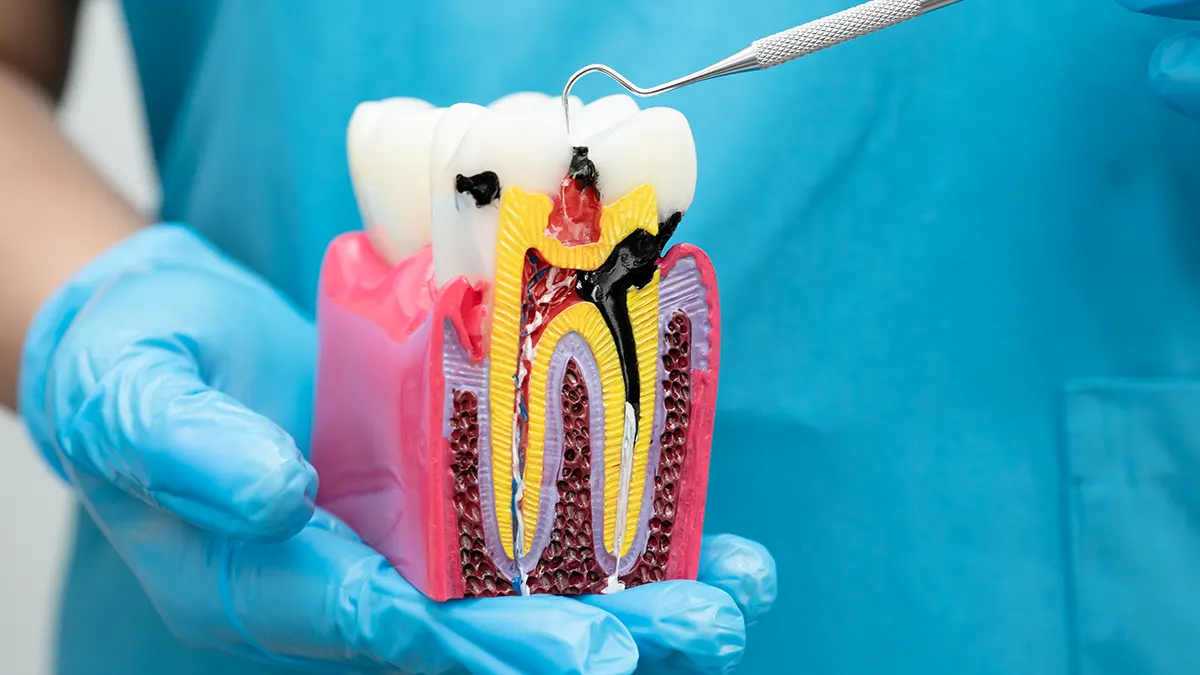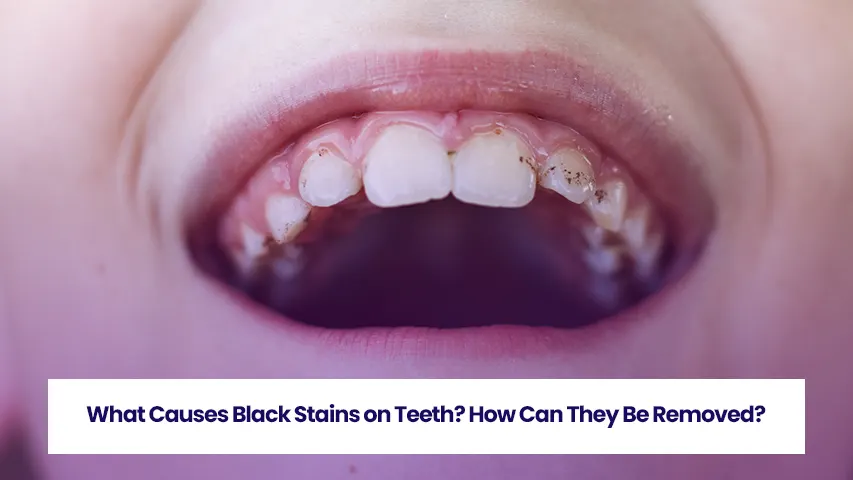
Choosing the Right Dental Implants: A Step by Step Guide
12 November 2025
What Causes Black Stains on Teeth? How Can They Be Removed?
12 November 2025Can a Root Canal for Broken Tooth Be Done? How to Do It?
Any time a tooth breaks, it may be regarded as a dental emergency. One of the most common and efficient solutions is a root canal for broken tooth. The immediate concern may be the pain and the appearance, but looming large over all of it is the question: Can the tooth be saved at all? For many, the answer comes in the form of a dental procedure. Designed to salvage a damaged tooth from extraction, it enables the tooth to continue to serve as a functioning part of your smile.
Here’s What You Need to Know
So, can a root canal be done on a broken tooth? In many cases, the answer is absolutely yes. Whether chipped, cracked, or fractured, the possibility of a root canal for broken tooth rests on one major factor: the health of the underlying tooth root and surrounding bone. If the root is still sound, and there is sufficient healthy tooth structure to work with, then this procedure is a great option. The core goal of any root canal treatment for fractured tooth is to remove the infected or inflamed pulp of the soft tissue inside the tooth, clean the area thoroughly, and seal it up to prevent future problems. This makes root canal for broken tooth a premier choice for treating a fractured tooth with root canal therapy.

How a Procedure of Root Canal for Broken Tooth Works
Understanding the broken tooth root canal procedure tooth can eliminate a lot of apprehension. How to do a root canal on a broken tooth is a meticulous yet straightforward process. Following complete numbing of the area for painless broken tooth root canal, a dentist makes a tiny opening to access the internal chambers. The pulp is removed, and the canals are cleaned, disinfected, and shaped. They are then filled with a special material and sealed. This entire process comprises the standard steps of root canal treatment. After this, the tooth will require a permanent restoration, such as a crown, in order to restore its strength and appearance. This final step is crucial for repairing a broken tooth with root canal therapy to be a long term success. It confirms that yes, a root canal for broken tooth can indeed save your smile.
Why a Root Canal is Often the Best Solution for a Broken Tooth
When considering dental solutions for broken teeth, it is helpful to know all the broken tooth repair options. The main question among them is can a damaged tooth be saved with a root canal. The procedure often is the best way to save the natural tooth. The cost of root canal for a chipped tooth can also vary, but generally, this investment will pay off by avoiding all the more complex and costly solutions that could follow after tooth extraction. If anyone is searching for a root canal following tooth breakage, the professionals at Aliadent are sensitive to the needs of their patients. A successful root canal for broken tooth can give the damaged tooth a second chance.

Frequently Asked Questions
What’s the difference between a root canal and having a tooth removed?
This is a fundamental question about two very different paths. A root canal is a saving procedure: the only purpose of it is to save your natural tooth by taking out the infected inner tissue, cleaning the canals, and sealing the tooth. It remains in your mouth, keeping your jawbone healthy and your surrounding teeth in place. Extraction involves the complete removal of the tooth from its socket. The gap that is left behind can result in other teeth starting to shift and bone loss in the jaw; often, another procedure such as a dental implant or bridge is required to fill the space. The difference at the core involves preservation versus removal and replacement. For those looking into options for the repair of a broken tooth, a root canal is usually the favorable first line of defense to keep your natural smile intact.
Is a root canal possible if my front tooth broke right down to the gum line?
This is indeed a very complicated situation; however, it is not always hopeless. Possibility entirely depends on whether there is enough healthy tooth structure left below the gum line for a dentist to work with. If sufficient structure remains, a root canal treatment for fractured tooth can be performed. Following the root canal, a post would be placed into the root canal space to act as an anchor, and then a crown would be built upon that post to recreate the visible part of the tooth. However, if the fracture extends far below the gum line or into the jawbone, the tooth is not restorable, and extraction might be the only option. A thorough examination with X rays or a 3D scan is necessary to make that determination.
How soon after a tooth fracture should I have a root canal to avoid extraction?
Time is of the essence. Following a fracture of your tooth, it is important to see a dentist as soon as possible, ideally within days. A prompt response often means the difference between saving or losing the tooth. Two significant complications associated with delay include infection and further fracturing. Infection occurs if bacteria enter the crack and infect the pulp of the tooth; this leads to abscesses that further damage the surrounding bone. In addition, small, hairline cracks in your teeth can become bigger and more elaborate fractures, which are irreparable. Moreover, prompt treatment of the root canal after the breaking of the tooth significantly raises the possibility of successful treatment and prevents you from having to resort to the more radical alternative of extraction.

What are the success rates of a root canal on a molar that cracked into the root?
If a crack extends into the tooth’s root, then the success rate drops significantly. This is one of the worst scenarios seen in dentistry. Success rates for root canals are usually very high, often exceeding 95%, for standard endodontic procedures on teeth with intact roots. However, if a molar experiences a “vertical root fracture,” that is, if a crack runs lengthwise down the root, the prognosis will often be poor. These cracks are hard to detect and often allow bacteria to creep deep into the surrounding bone, where it is practically impossible to seal the tooth adequately. About the only recommended course of action for most confirmed vertical root fractures is extraction. The extent and type of the crack should first be clearly defined by a dentist before deciding if a root canal for cracked tooth with root damage is possible or not.
Can I skip the crown after a root canal on a broken tooth and just fill it?
This is highly discouraged. Even though it may seem as if one is saving time or money, missing the crown when performing a root canal procedure significantly jeopardizes the chances of the long term success of the procedure. During a root canal procedure, the pulp is taken out; this removes the tooth’s moisture and nutrient supply, which makes the tooth much more fragile and eventually prone to breaking. A simple filling does not offer enough strength and protection for a root canal for a broken tooth that has already faced substantial damage. The tooth, particularly a chewing molar, remains in tremendous pressure. A crown acts much like a protective helmet in encasing the whole tooth, hence distributing the biting forces and preventing the tooth from fracturing. Choosing just a filling after such a procedure often results in the breaking of the tooth again, usually in an irreparable manner, thus leading to its loss.
Does a root canal on a broken tooth hurt?
Modern dentistry has made this procedure very comfortable. The perception that root canals are painful is an outdated myth. You will receive local anesthesia that completely numbs the tooth and the surrounding area. You really should not feel any pain during the actual procedure. As a matter of fact, the root canal for a broken tooth is what provides significant pain relief for broken tooth root canal by removing the infected and inflamed nerve tissue that was causing the ache. Any mild discomfort or sensitivity following the procedure is normal and usually manageable with over the counter pain relievers. How long does a tooth restored with a root canal and crown last? With proper care, a tooth that has undergone a root canal for a broken tooth and has been properly restored with a crown can last for very many years, often for the rest of your life. The key to this longevity is excellent oral hygiene: brushing, flossing, and regular dental check ups. Just because the tooth no longer has a live nerve does not mean it is immune to decay or gum disease. The crown may also be subject to wear and tear over many years and may eventually need replacement, but the underlying tooth structure can remain sound. The team at Aliadent wants you to know that this saved tooth will work exactly like any other tooth for decades.













